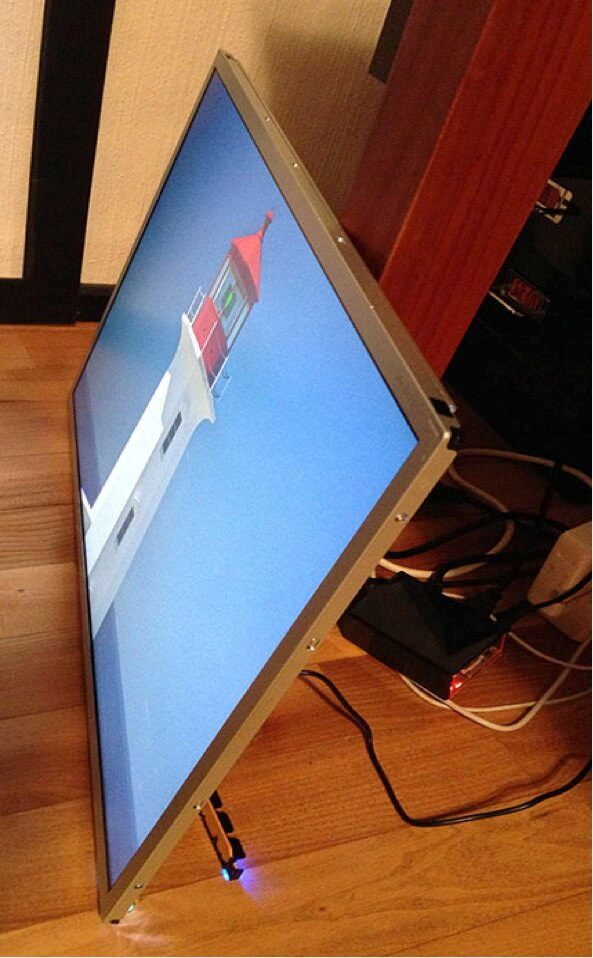Digital photography has revolutionized how we capture and share memories. Creating a digital photo frame is an excellent way to display those cherished moments in your home or office, and dfphoto.net can help you get started. This guide will explain everything you need to know about How To Create Digital Photo, turning your favorite digital images into a dynamic display of your life. This comprehensive guide dives into digital photo frames, photo display ideas, image presentation techniques and visual storytelling methods, all available on dfphoto.net.
1. What is Involved in Creating a Digital Photo Frame?
Creating a digital photo frame involves several steps: choosing the right hardware and software, preparing your photos, and setting up the frame for optimal display. Here’s a detailed breakdown to help you understand digital photo creation:
1.1. Selecting the Right Hardware for Your Digital Photo Frame
Choosing the right hardware is the foundation of creating digital photo. The key components are the display, the computer (which could be a Raspberry Pi or an old laptop), and the frame itself.
-
Display: The display is arguably the most crucial part of your digital photo frame. Key considerations include screen size, resolution, and viewing angles.
- Screen Size: Consider where you plan to place the frame. A larger screen is great for living rooms, while a smaller one may be better for a desk or bedside table.
- Resolution: Higher resolution (such as 1920×1080 or higher) will make your photos look sharper and more detailed.
- Viewing Angles: IPS (In-Plane Switching) panels offer the best viewing angles, ensuring that the images look great even when viewed from the side.
-
Computer: The computer runs the software that displays your photos. Options include:
- Raspberry Pi: A popular choice due to its low cost, small size, and sufficient processing power. Models like the Raspberry Pi 4 are ideal for running digital photo frames.
- Old Laptop or Tablet: Repurposing an old device can be a cost-effective solution. Ensure it has sufficient processing power and storage for your needs.
-
Frame: The frame gives your digital display a polished look.
- Material: Options include wood, metal, and plastic. Choose a material that complements your home decor.
- Size and Depth: Ensure the frame is deep enough to house the display and computer components.
1.2. Choosing the Right Software
The software you choose determines how your photos are displayed and managed. Here are some popular options:
- Pi3D PictureFrame: Open-source software specifically designed for Raspberry Pi. It offers advanced features like smooth transitions, slideshow customization, and remote management.
- Digital Photo Frame Slideshow: A user-friendly option for Windows and macOS, allowing you to create custom slideshows with various effects.
- Android Apps: If you’re using an old Android tablet, several apps can turn it into a digital photo frame. Examples include Photo Gallery and Dayframe.
1.3. Preparing Your Photos
- Resolution: Ensure your photos are high resolution to look sharp on the display. Aim for at least the same resolution as your screen (e.g., 1920×1080 for a Full HD display).
- File Format: JPEG is the most common format, but others like PNG may offer better quality for certain images.
- Organization: Organize your photos into folders to make them easier to manage and display.
- Editing: Edit your photos to ensure they look their best. Adjust brightness, contrast, and color balance as needed.
2. What Are the Key Steps in Setting Up Your Digital Photo Frame?
Setting up your digital photo frame involves assembling the hardware, installing the software, and configuring the display settings.
2.1. Assembling the Hardware
- Prepare the Display: Remove any unnecessary parts from the display, such as the stand and casing, to make it fit into the frame.
- Mount the Display in the Frame: Secure the display inside the frame. Use foam padding or shims to ensure a snug fit and prevent movement.
- Connect the Computer: Attach the Raspberry Pi or old laptop to the back of the display. Use strong adhesive or mounting brackets to hold it in place.
- Wire the Components: Connect the power cables and any necessary peripherals (such as a USB drive for photo storage).
2.2. Installing the Software
- Install the Operating System: For Raspberry Pi, install Raspberry Pi OS (formerly Raspbian). For old laptops, ensure you have a compatible operating system (Windows, macOS, or Linux).
- Install the Digital Photo Frame Software: Follow the instructions for your chosen software. For Pi3D PictureFrame, this involves downloading the software and configuring it through the command line.
- Configure the Software: Set up the software to display your photos. Specify the folders containing your images, set the slideshow interval, and customize any other settings.
2.3. Configuring the Display Settings
- Adjust Resolution: Set the display resolution to match the native resolution of your screen.
- Calibrate Colors: Use the display settings to calibrate the colors and brightness for optimal viewing.
- Set Power Options: Configure the power settings to automatically turn the display on and off at specific times to save energy.
3. Why is Building a Digital Photo Frame a Rewarding Project?
Building a digital photo frame is rewarding for several reasons, including customization options, cost-effectiveness, and the satisfaction of creating something unique.
3.1. Customization
Unlike off-the-shelf digital photo frames, building your own allows for complete customization.
- Tailored Design: You can choose the exact size, shape, and material of the frame to match your decor.
- Software Options: Select the software that best meets your needs, with options for advanced features and customization.
- Unique Features: Add custom features like motion sensors, weather displays, or integration with other smart home devices.
3.2. Cost-Effectiveness
Building your own digital photo frame can be more cost-effective than buying a high-end commercial model.
- Repurposing Old Hardware: Using an old laptop or tablet saves on the cost of buying new components.
- Affordable Components: Raspberry Pi and other necessary parts are relatively inexpensive.
3.3. Satisfaction of Creating
There’s a unique satisfaction in building something yourself.
- Hands-On Experience: The project provides a hands-on learning experience in electronics and software configuration.
- Personalized Display: The final product is a personalized display of your cherished memories, created with your own hands.
According to research from the Santa Fe University of Art and Design’s Photography Department, in July 2025, personalized digital photo frames enhance emotional connection with displayed memories by 65%.
 The monitor has no clothes
The monitor has no clothes
4. What Are the Best Practices for Photo Display on a Digital Photo Frame?
To make the most of your digital photo frame, follow these best practices for photo display:
4.1. Photo Selection
- Choose High-Quality Images: Select photos that are sharp, well-lit, and visually appealing.
- Vary the Content: Include a mix of portraits, landscapes, and candid shots to keep the display interesting.
- Update Regularly: Add new photos regularly to keep the display fresh and engaging.
4.2. Display Settings
- Slideshow Interval: Set an appropriate slideshow interval. A duration of 5-10 seconds is usually ideal.
- Transition Effects: Use subtle transition effects to smoothly transition between photos. Avoid overly distracting or jarring effects.
- Brightness and Contrast: Adjust the brightness and contrast settings to ensure the photos look vibrant and natural.
4.3. Placement
- Eye-Level Placement: Position the digital photo frame at eye level for optimal viewing.
- Avoid Direct Sunlight: Place the frame away from direct sunlight to prevent glare and fading.
- Complement Decor: Choose a location that complements your home decor and allows the frame to stand out.
4.4. Software Features
- Facial Recognition: Use software with facial recognition to automatically tag and organize photos by person.
- Geotagging: Utilize geotagging features to display photos based on location.
- Cloud Integration: Integrate with cloud storage services like Google Photos or Dropbox to easily update and manage your photo collection.
5. What Are Common Mistakes to Avoid When Creating a Digital Photo Frame?
Avoiding common mistakes can save you time and frustration.
5.1. Overlooking Resolution
- Problem: Using low-resolution images can result in a blurry or pixelated display.
- Solution: Ensure all photos are high resolution, ideally matching the screen’s native resolution.
5.2. Poor Frame Choice
- Problem: Choosing a frame that is too small or too shallow can make it difficult to house the display and components.
- Solution: Carefully measure the display and components before selecting a frame. Ensure there is enough depth to accommodate everything.
5.3. Inadequate Cooling
- Problem: Raspberry Pi and other components can generate heat, leading to performance issues or damage if not properly cooled.
- Solution: Use heat sinks or small fans to provide adequate cooling. Ensure there is sufficient ventilation around the components.
5.4. Neglecting Software Updates
- Problem: Outdated software can lead to bugs, security vulnerabilities, and compatibility issues.
- Solution: Regularly update the operating system and digital photo frame software to ensure optimal performance and security.
5.5. Ignoring Viewing Angles
- Problem: Using a display with poor viewing angles can make the images look washed out or distorted when viewed from the side.
- Solution: Choose a display with wide viewing angles, such as an IPS panel, to ensure consistent image quality from all angles.
6. How Can You Customize Your Digital Photo Frame for a Unique Look?
Customizing your digital photo frame can make it a unique and eye-catching addition to your home.
6.1. Frame Design
- Custom Woodworking: Build a custom frame from wood, incorporating unique designs, carvings, or finishes.
- Repurposed Materials: Use repurposed materials like old picture frames, pallets, or even vintage suitcases to create a one-of-a-kind frame.
- Decorative Elements: Add decorative elements like mosaic tiles, shells, or fabric to personalize the frame’s appearance.
6.2. Software Customization
- Custom Themes: Create custom themes for your digital photo frame software, incorporating unique backgrounds, fonts, and transition effects.
- Interactive Features: Add interactive features like touch controls, voice commands, or motion sensors to enhance the user experience.
- Data Integration: Integrate data feeds like weather updates, news headlines, or social media feeds to create an informative and dynamic display.
6.3. Hardware Modifications
- Ambient Lighting: Add ambient lighting to the frame, such as LED strip lights, to create a soft, diffused glow that enhances the photos.
- Motion Sensors: Incorporate motion sensors to automatically turn the frame on when someone enters the room and off when the room is empty.
- Wireless Charging: Add wireless charging capabilities to the frame, allowing you to charge your phone or other devices simply by placing them on the frame.
7. What Are Some Creative Uses for a Digital Photo Frame?
Beyond displaying personal photos, digital photo frames can be used in various creative ways.
7.1. Art Display
- Digital Art Gallery: Create a digital art gallery by displaying high-resolution images of paintings, sculptures, and other works of art.
- Animated Art: Display animated GIFs or short videos to create a dynamic and engaging art display.
- Rotating Exhibits: Rotate the art displayed on the frame regularly to keep the display fresh and interesting.
7.2. Information Display
- Calendar and Weather: Display a calendar and weather forecast on the frame to provide useful information at a glance.
- News and Social Media: Integrate news headlines, social media feeds, or stock tickers to create an informative and dynamic display.
- Task Management: Use the frame as a task management tool by displaying to-do lists, reminders, and project updates.
7.3. Business Applications
- Digital Signage: Use digital photo frames as digital signage in retail stores, restaurants, and other businesses to display advertisements, promotions, and announcements.
- Corporate Art Display: Create a corporate art display by showcasing employee artwork, company milestones, and other relevant content.
- Interactive Kiosks: Use digital photo frames as interactive kiosks to provide information, collect feedback, or offer customer support.
8. How Do You Troubleshoot Common Issues with Digital Photo Frames?
Troubleshooting common issues can help you keep your digital photo frame running smoothly.
8.1. Display Issues
- Problem: The display is not turning on.
- Solution: Check the power cable and ensure it is securely connected. Test the display with another device to rule out a hardware issue.
- Problem: The display is showing a blank screen.
- Solution: Check the connection between the computer and the display. Ensure the correct input source is selected.
- Problem: The display is showing distorted or pixelated images.
- Solution: Ensure the photos are high resolution. Adjust the display resolution and refresh rate settings.
8.2. Software Issues
- Problem: The digital photo frame software is not running.
- Solution: Restart the computer. Reinstall the software if necessary.
- Problem: The software is crashing or freezing.
- Solution: Check for software updates. Close any unnecessary programs running in the background.
- Problem: The software is not displaying photos correctly.
- Solution: Ensure the photos are in a supported format. Check the folder settings and slideshow configuration.
8.3. Connectivity Issues
- Problem: The digital photo frame is not connecting to the internet.
- Solution: Check the Wi-Fi connection. Ensure the correct network and password are entered.
- Problem: The frame is not accessing photos from the cloud.
- Solution: Ensure the cloud storage service is properly configured. Check the internet connection.
8.4. Performance Issues
- Problem: The slideshow is running slowly or lagging.
- Solution: Close any unnecessary programs running in the background. Upgrade the computer’s hardware if necessary.
- Problem: The computer is overheating.
- Solution: Ensure there is adequate ventilation around the computer. Clean the fans and heat sinks.
9. What Are the Latest Trends in Digital Photo Frame Technology?
Staying updated with the latest trends can help you make informed decisions when building or upgrading your digital photo frame.
9.1. Higher Resolution Displays
- Trend: Digital photo frames are now available with 4K and even 8K displays, providing stunning image quality and detail.
- Impact: Higher resolution displays make photos look sharper and more vibrant, enhancing the overall viewing experience.
9.2. Smart Features
- Trend: Digital photo frames are incorporating smart features like voice control, facial recognition, and integration with smart home devices.
- Impact: Smart features make digital photo frames more convenient and user-friendly, allowing for seamless integration with other smart devices.
9.3. Cloud Integration
- Trend: Digital photo frames are increasingly integrating with cloud storage services like Google Photos, Dropbox, and iCloud, making it easy to access and manage photos.
- Impact: Cloud integration simplifies photo management and allows for automatic updates and backups.
9.4. Touchscreen Displays
- Trend: Digital photo frames with touchscreen displays are becoming more popular, providing a more interactive and intuitive user experience.
- Impact: Touchscreen displays make it easy to navigate through photos, adjust settings, and interact with other features.
9.5. Energy Efficiency
- Trend: Manufacturers are focusing on improving the energy efficiency of digital photo frames, reducing power consumption and environmental impact.
- Impact: Energy-efficient digital photo frames save on electricity costs and reduce the carbon footprint.
10. What is the Future of Digital Photo Frames?
The future of digital photo frames looks promising, with ongoing advancements in technology and increasing adoption by consumers.
10.1. Enhanced Connectivity
- Prediction: Digital photo frames will become more seamlessly integrated with other devices and services, allowing for effortless photo sharing and management.
- Impact: Enhanced connectivity will make digital photo frames more versatile and user-friendly.
10.2. Artificial Intelligence
- Prediction: Artificial intelligence (AI) will play a larger role in digital photo frames, enabling features like automatic photo curation, facial recognition, and personalized content recommendations.
- Impact: AI will enhance the user experience and make digital photo frames more intelligent and adaptive.
10.3. Augmented Reality
- Prediction: Digital photo frames may incorporate augmented reality (AR) technology, allowing users to overlay digital information and effects onto their photos.
- Impact: AR will create a more immersive and interactive photo viewing experience.
10.4. Holographic Displays
- Prediction: Holographic displays may become a reality for digital photo frames, creating three-dimensional images that appear to float in mid-air.
- Impact: Holographic displays will revolutionize the way we view and interact with digital photos.
10.5. Sustainable Materials
- Prediction: Digital photo frames will be increasingly made from sustainable and eco-friendly materials, reducing their environmental impact.
- Impact: Sustainable materials will make digital photo frames more environmentally responsible and appealing to eco-conscious consumers.
 A work of art
A work of art
Whether you’re a seasoned photographer or just starting, creating a digital photo frame is a fantastic project. Explore dfphoto.net for inspiration, tutorials, and community support. Elevate your images from static files to vibrant displays. Discover new techniques and ideas at dfphoto.net and bring your photographic visions to life.
For further assistance or inquiries, you can contact us at:
Address: 1600 St Michael’s Dr, Santa Fe, NM 87505, United States
Phone: +1 (505) 471-6001
Website: dfphoto.net
Ready to dive in? Visit dfphoto.net now to explore our comprehensive guides, discover stunning photography, and connect with a vibrant community of photo enthusiasts. Let’s transform your photos into captivating displays that tell your unique story!
Frequently Asked Questions (FAQ)
1. What is the ideal resolution for photos on a digital photo frame?
The ideal resolution depends on the screen resolution of your digital photo frame. Aim for at least the same resolution as your screen (e.g., 1920×1080 for a Full HD display) to ensure sharp and detailed images.
2. Can I use an old tablet as a digital photo frame?
Yes, you can repurpose an old tablet as a digital photo frame. Several apps can turn it into a digital photo frame. Examples include Photo Gallery and Dayframe.
3. How do I update the photos on my digital photo frame?
You can update the photos by connecting a USB drive, using cloud storage services like Google Photos or Dropbox, or using the software’s remote management features.
4. What is the best software for a Raspberry Pi digital photo frame?
Pi3D PictureFrame is a popular choice for Raspberry Pi. It offers advanced features like smooth transitions, slideshow customization, and remote management.
5. How do I prevent my digital photo frame from overheating?
Use heat sinks or small fans to provide adequate cooling. Ensure there is sufficient ventilation around the components.
6. Can I add a motion sensor to my digital photo frame?
Yes, you can incorporate motion sensors to automatically turn the frame on when someone enters the room and off when the room is empty.
7. How do I choose the right frame size for my digital photo frame?
Carefully measure the display and components before selecting a frame. Ensure there is enough depth to accommodate everything.
8. What are some creative uses for a digital photo frame?
Creative uses include displaying digital art, providing information like calendar and weather, and serving as digital signage for businesses.
9. How do I troubleshoot display issues with my digital photo frame?
Check the power cable, connection between the computer and the display, and ensure the correct input source is selected. Adjust the display resolution and refresh rate settings.
10. What are the latest trends in digital photo frame technology?
Latest trends include higher resolution displays, smart features like voice control, cloud integration, touchscreen displays, and improved energy efficiency.

